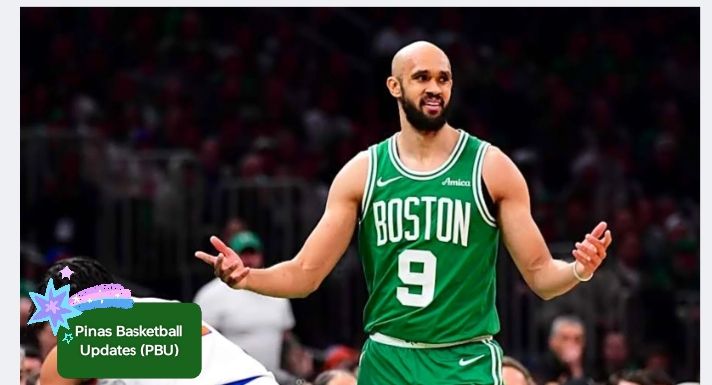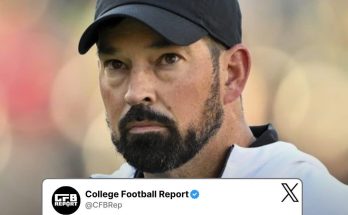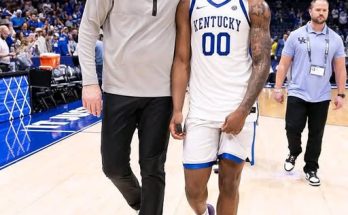The NBA offseason never fails to deliver drama, speculation, and surprising pivots in trade negotiations. One such storyline that’s captured attention across the basketball world involves the evolving trade deal between the Portland Trail Blazers and the Boston Celtics. What began as a multi-component transaction reportedly involving additional assets has since been stripped down to a simplified one-for-one player swap, eliminating previously rumored secondary parts such as draft picks or cash considerations. The decision to reduce the deal to a straight player exchange has ignited questions about the motivations, long-term strategies, and implications for both franchises.
In recent years, the Boston Celtics have consistently operated as one of the NBA’s most aggressive and forward-thinking organizations. Following their 2024 NBA championship run, expectations for Boston have soared even higher. Led by stars Jayson Tatum and Jaylen Brown, the Celtics have been careful not to disrupt the chemistry and system that brought them to the pinnacle of the league. However, championship teams understand better than anyone that complacency is the enemy of sustained success. The Celtics front office, helmed by Brad Stevens, has shown a willingness to adapt, tweak, and adjust in order to preserve the franchise’s competitive edge.
On the other hand, the Portland Trail Blazers have spent the past few seasons recalibrating. After moving on from longtime franchise cornerstone Damian Lillard, Portland entered a rebuild centered around promising youth and draft capital. With Scoot Henderson emerging as a foundational piece and other young talents like Shaedon Sharpe and Anfernee Simons continuing to develop, the Blazers have had to carefully consider how every roster move aligns with their long-term vision. Portland’s primary focus has been flexibility — both financial and roster-based — and that’s made them deliberate in trade decisions, opting to acquire assets that fit a patient rebuild rather than rushing to compete prematurely.
When early reports of a trade between the Blazers and Celtics began circulating, it appeared that both teams were approaching the table with different objectives but complementary needs. Boston, looking to reinforce its rotation, was interested in acquiring a player who could contribute immediately, even in a limited role. Portland, by contrast, was open to parting ways with a veteran who no longer fit their timeline in exchange for future-oriented assets like second-round picks or expiring contracts. The original version of the trade, as rumored, would have seen Boston sending not just a player but also additional compensation in the form of two second-round picks, perhaps as a sweetener to incentivize Portland to take on a salary or to simply balance perceived value.
However, negotiations in the NBA are rarely linear. As talks progressed, both teams reassessed their positions. For Boston, the front office may have begun to question whether giving up two second-round picks was a prudent use of their remaining trade assets. Second-round picks may not hold the same glamour as lottery picks, but in today’s NBA, they represent flexibility. They can be used in future deals, turned into rotation players with smart scouting, or packaged together in multi-team trades. Boston’s decision to withdraw the picks from the deal could be seen as a signal that they did not view the trade target as irreplaceably valuable, or perhaps that they had competing options elsewhere.
Portland’s acceptance of a reduced deal — a straight player-for-player trade — suggests a recalibration on their part as well. It’s possible the Blazers realized that there was limited market demand for the player they were offloading, which made retaining the originally proposed draft capital unfeasible. Alternatively, the Blazers may have had internal motivations for completing the trade quickly, perhaps to clear a roster spot for a younger player or to avoid potential contract complications heading into training camp. One must also consider that salary cap implications, luxury tax thresholds, and trade exceptions could have influenced the final shape of the deal. In today’s NBA, front offices operate within a complex matrix of rules that often dictate what’s possible more than what’s ideal.
This shift toward a simplified player swap also underlines a broader trend in NBA transactions. Gone are the days when teams would routinely attach multiple picks to offload a contract or sweeten a marginal deal. The new collective bargaining agreement has tightened the financial screws on high-spending franchises, making every draft pick and salary slot increasingly valuable. Boston, now a team expected to remain above the luxury tax for the foreseeable future, must tread carefully with asset management. With the looming reality of harsher repeater penalties and limited mid-level exceptions, the Celtics can’t afford to hemorrhage picks for minor upgrades.
From a basketball standpoint, the player acquired by Boston is likely someone who addresses a niche need — depth at a specific position, defensive versatility, or playoff experience. Brad Stevens has shown a preference for players who can contribute without needing high usage, and Boston’s core is strong enough that any addition must be able to thrive in a complementary role. Whether the new player becomes part of the regular rotation or is simply insurance against injury, the Celtics are betting on fit and utility. For Portland, the departing player was probably someone whose skillset overlapped with younger pieces, thus making their role redundant.
One might argue that the real win for Portland in this reduced deal is intangible — freeing up opportunity. For rebuilding teams, minutes and development reps are currency. Having an established veteran can sometimes slow the progress of young guards or wings who need the trial-by-fire of NBA gameplay to grow. By removing that veteran presence, even without the previously discussed second-round picks, the Blazers may be prioritizing their youth pipeline more effectively.
Fan reaction to the restructured deal has been mixed, as is often the case with trades that aren’t headlined by stars or blockbuster implications. Celtics fans have expressed curiosity about why Stevens pulled back the additional draft assets, with some praising the restraint and others wondering whether the team is being too conservative in reinforcing its bench. Blazers fans, meanwhile, are trying to read between the lines — was this an indication of poor trade leverage, or simply a reflection of internal priorities shifting as summer league evaluations progressed?
Trade values in the NBA are inherently fluid. A player deemed unworthy of second-round picks in July could become a hot commodity by January, depending on injuries, performance, or team needs. That’s why the front office decision-making process is as much about timing and projection as it is about evaluation. Boston may well believe that they are acquiring a low-risk contributor whose value could rise with familiarity in their system. Portland may be betting that by moving out a veteran now, they clear the way for an in-season breakout by one of their younger pieces.
The ripple effect of this trade could also extend beyond the two teams directly involved. In an increasingly interconnected league, every transaction reshapes the marketplace. Other teams now have more clarity on Boston’s willingness (or unwillingness) to part with draft assets, which could affect future negotiations. Rival GMs take note of these moves, cataloging them as reference points when constructing trade proposals down the line. Likewise, Portland’s decision to prioritize roster flexibility over marginal draft compensation could send a signal to other rebuilding franchises facing similar dilemmas.
It’s worth noting that reduced trades like this often look underwhelming in the short term but can pay dividends later. Some of the NBA’s most impactful deals began as quiet swaps that didn’t make headlines. A role player traded for bench depth suddenly finds new life on a contender. A young player freed from a logjam becomes a breakout contributor. The absence of picks or big names in a deal doesn’t necessarily mean the trade lacks substance — sometimes, the most strategic moves are the ones that don’t immediately command attention.
In the case of the Trail Blazers and the Celtics, this trade may ultimately be remembered not for what it involved, but for what it didn’t. The absence of the two previously reported second-round picks reframes the entire narrative. It tells us something about Boston’s asset strategy, Portland’s internal evaluation, and the new economic reality facing NBA front offices. With the league becoming more data-driven and cautious in its long-term planning, every trade is an opportunity to glean insight into a team’s priorities.
Additionally, this transaction serves as a reminder that leaks and reports in the NBA are fluid. What’s reported early in the negotiation process often changes by the time the paperwork is filed with the league office. Teams use media strategically — sometimes to float trial balloons, sometimes to apply pressure, and sometimes to control public perception. When details like “two second-round picks” appear in early reports, it may reflect just one point in a broader negotiation arc. The fact that those picks ultimately disappeared from the final deal tells us that negotiations were more dynamic and fluid than static.
For the fans, the trade’s evolution offers a behind-the-scenes look into how professional basketball organizations operate. Every decision — even one as seemingly minor as whether to include a second-round pick — involves layers of consideration. Cap implications, player preferences, agent relationships, and long-term goals all come into play. For players, these decisions impact their lives and careers, often with little warning. One moment they are part of a team’s plan; the next, they’re packing bags and learning a new playbook.
In closing, the trade between the Portland Trail Blazers and Boston Celtics, now reduced to a straightforward player-for-player swap, might not shake the league to its core, but it encapsulates many of the strategic nuances that define the modern NBA. As fans dissect the move and analysts project its consequences, both teams move forward with a clearer sense of direction. For Boston, it’s a calculated attempt to strengthen their bench without sacrificing future flexibility. For Portland, it’s a continuation of a methodical rebuild centered on development and adaptability. And for everyone watching, it’s another example of how every trade — no matter how small — tells a larger story about where the NBA is headed.



